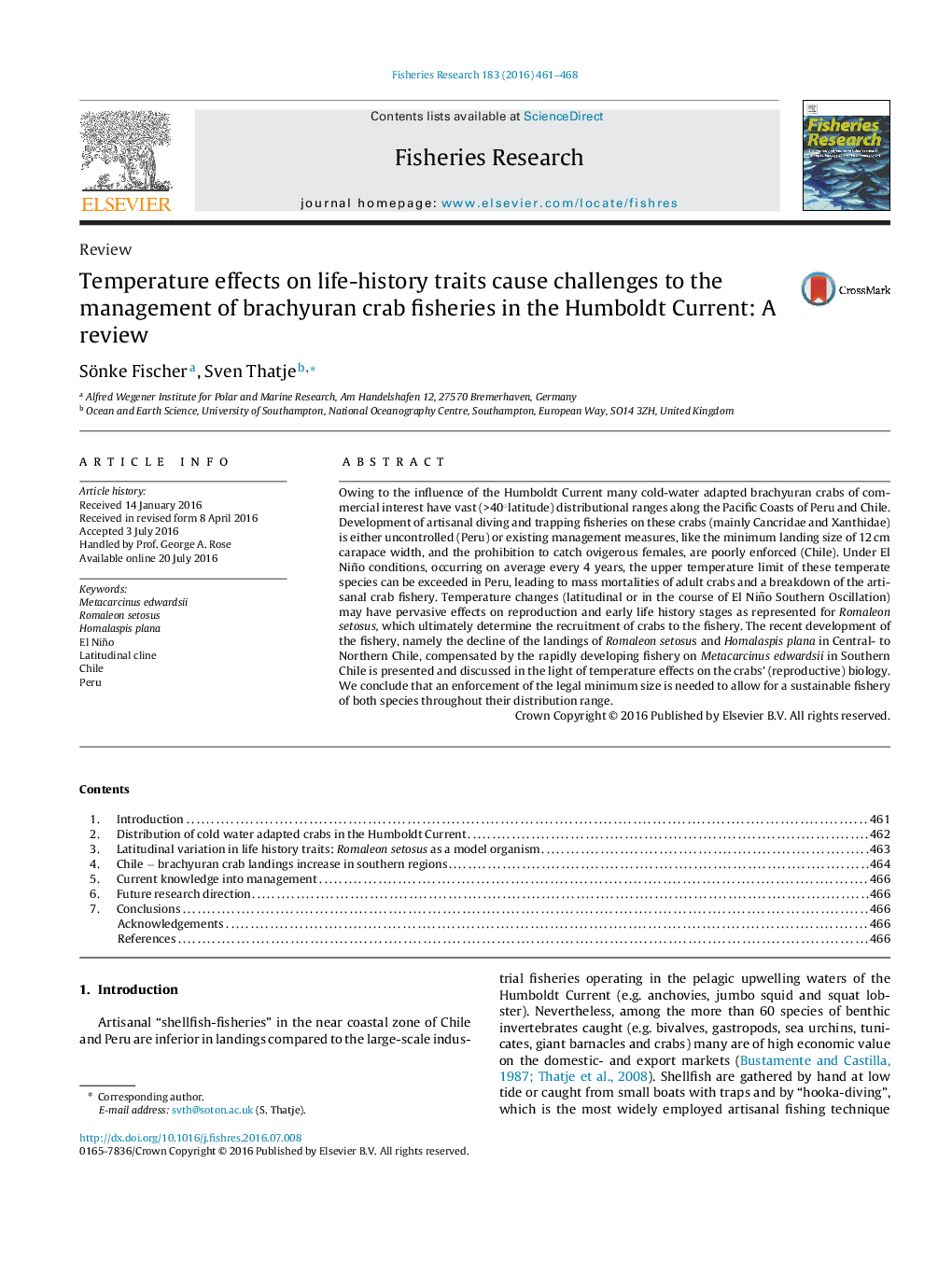| کد مقاله | کد نشریه | سال انتشار | مقاله انگلیسی | نسخه تمام متن |
|---|---|---|---|---|
| 6385230 | 1626786 | 2016 | 8 صفحه PDF | دانلود رایگان |
- The decline of the Chilean cancrid crab fisheries is documented.
- The ongoing decline of Romaleon setosus and Homalaspis plana in Chile is evidenced.
- There is an evidenced lack of enforcement of the legal minimum size of Metacarcinus edwardsii.
- Temperature affects cancrid crab life histories at population level demanding for a population-specific management.
Owing to the influence of the Humboldt Current many cold-water adapted brachyuran crabs of commercial interest have vast (>40°latitude) distributional ranges along the Pacific Coasts of Peru and Chile. Development of artisanal diving and trapping fisheries on these crabs (mainly Cancridae and Xanthidae) is either uncontrolled (Peru) or existing management measures, like the minimum landing size of 12 cm carapace width, and the prohibition to catch ovigerous females, are poorly enforced (Chile). Under El Niño conditions, occurring on average every 4 years, the upper temperature limit of these temperate species can be exceeded in Peru, leading to mass mortalities of adult crabs and a breakdown of the artisanal crab fishery. Temperature changes (latitudinal or in the course of El Niño Southern Oscillation) may have pervasive effects on reproduction and early life history stages as represented for Romaleon setosus, which ultimately determine the recruitment of crabs to the fishery. The recent development of the fishery, namely the decline of the landings of Romaleon setosus and Homalaspis plana in Central- to Northern Chile, compensated by the rapidly developing fishery on Metacarcinus edwardsii in Southern Chile is presented and discussed in the light of temperature effects on the crabs' (reproductive) biology. We conclude that an enforcement of the legal minimum size is needed to allow for a sustainable fishery of both species throughout their distribution range.
Journal: Fisheries Research - Volume 183, November 2016, Pages 461-468
